By accessing our 180 Days of Math for Fifth Grade Answers Key Day 165 regularly, students can get better problem-solving skills.
180 Days of Math for Fifth Grade Answers Key Day 165
Directions: Solve each problem.
Question 1.

Answer:
The addition is the term used to describe adding two or more numbers together. The addition is denoted using the plus sign ‘+‘ such as the addition of 3 and 3 can be written as 4 + 4. Also, the plus sign (+) can be used as many times as required, such as
4 + 4 + 4 + 4.
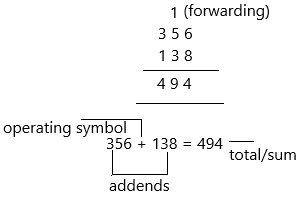
Therefore, the answer is 494.
Question 2.
6.3 × 2.5 = __________
Answer:
In mathematics, multiplication is a method of finding the product of two or more numbers. It is one of the basic arithmetic operations, that we use in everyday life. The major application we can see in multiplication tables.
In arithmetic, the multiplication of two numbers represents the repeated addition of one number with respect to another. These numbers can be whole numbers, natural numbers, integers, fractions, etc. If m is multiplied by n, then it means either m is added to itself ‘n’ a number of times or vice versa.
The formula for multiplication:
The multiplication formula is given by:
Multiplier × Multiplicand = Product
– The multiplicand is the total number of objects in each group
– A multiplier is the number of equal groups
– Product is the result of multiplication of multiplier and multiplicand
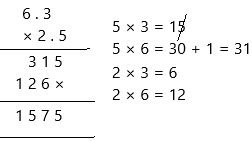
Therefore, the answer is 1575.
Question 3.
843 ÷ 72 = __________
Answer:
– The division is breaking a number into an equal number of parts. The division is an arithmetic operation used in Maths. It splits a given number of items into different groups.
– There are a number of signs that people may use to indicate division. The most common one is ÷, but the backslash / and a horizontal line (-) is also used in the form of Fraction, where a Numerator is written on the top and a Denominator on the bottom.
The division formula is:
Dividend ÷ Divisor = Quotient.
Where,
A dividend is a number to be divided
The divisor is the number to be divided with
The quotient is the result to be found after the division.
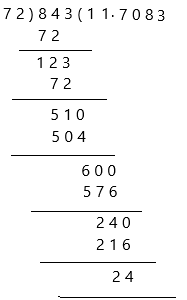
The quotient is 11.7083
Question 4.
What is the value of the digit 2 in the number 25,307?
Answer:
Place value in Maths describes the position or place of a digit in a number. Each digit has a place in a number. When we represent the number in general form, the position of each digit will be expanded. Those positions start from a unit place or we also call it one’s position. The order of place value of digits of a number of right to left is units, tens, hundreds, thousands, ten thousand, a hundred thousand, and so on.
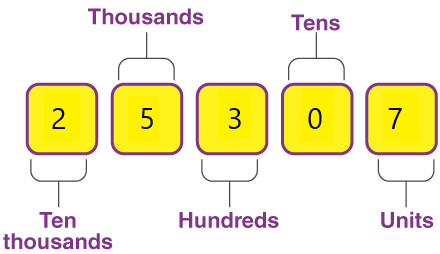
Therefore, the value of digit 2 is ten thousand.
Question 5.
$9.45 + $8.65 = __________
Answer: $18.10
The addition is the term used to describe adding two or more numbers together. The addition is denoted using the plus sign ‘+‘ such as the addition of 3 and 3 can be written as 4 + 4. Also, the plus sign (+) can be used as many times as required, such as
4 + 4 + 4 + 4.
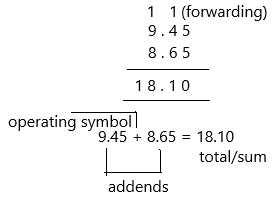
Therefore, the answer is $18.10
Question 6.
Write the number that comes next in the sequence.
660, 550, 440, _________
Answer: 330
In Mathematics, number patterns are the patterns in which a list number follows a certain sequence. Generally, the patterns establish the relationship between two numbers. It is also known as the sequence of series in numbers. In order to solve the problems on the number pattern, first, we have to understand the rule being followed in the pattern.
It is an arithmetic sequence. Arithmetic sequences are sequences of numbers with constant differences between consecutive terms in mathematics. Common differences between consecutive terms are called common differences.
The above-given sequence is: 660, 550, 440, X
The X term we need to find out.
First, subtract the 660 and 550 then we get the 110.
So, the difference between the consecutive terms is 110.
440-110 = 330. Therefore, the next number is 330.
Thus, the sequence is 660, 550, 440, 330.
Question 7.
x ÷ 20 = 10 × 1
x = ___________
Answer:
We need to find out the x value.
x ÷ 20 = 10 × 1
x ÷ 20 = 10
x = 20 × 10
x = 200
Now put the x value in the above expression.
200 ÷ 20 = 10
10 = 10
Hence, the answer is verified.
Question 8.
3\(\frac{1}{2}\) feet = __________ inches
Answer:
You can use the factor label method (also known as dimensional analysis) to convert a length from one unit of measure to another using the conversion factors. In the factor label method, you multiply by unit fractions to convert a measurement from one unit to another. Study the example below to see how the factor label method can be used to convert 3 1/2 feet into an equivalent number of inches.
We know that 1 inch is equal to 12 inches.
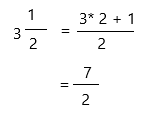
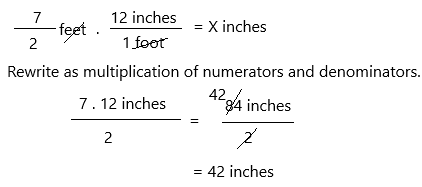
there are 42 inches in 3 1/2 feet.
Question 9.
How many faces does a rectangular pyramid have?
Answer:
Rectangular pyramids are three-dimensional figures formed by base and lateral faces. The base has a rectangular shape and the side faces are triangles. Rectangular pyramids have 5 faces, 8 edges, and 5 vertices. These figures are not regular since their base has sides of different lengths. However, the opposite faces are the same.
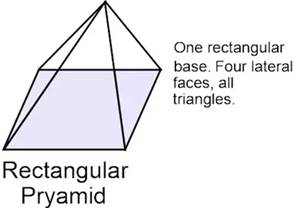
Question 10.
True or false?
A pie graph uses a circle divided into sectors of different sizes to represent information.
Answer: True
A pie chart is a type of graph in which a circle is divided into sectors that each represents a proportion of the whole. Pie charts are a useful way to organize data in order to see the size of components relative to the whole and are particularly good at showing percentage or proportional data.
Question 11.
You make trail mix using the following ingredients: 25 candies, 50 raisins, 75 pieces of cereal, and 50 peanuts. If you reach in the bowl and grab one piece of food, what is the probability you will not grab a piece of cereal?
Answer:
This formula is the number of favourable outcomes to the total number of all the possible outcomes that we have already decided in the Sample Space.
The probability of an Event = (Number of favourable outcomes) / (Total number of possible outcomes)
P(A) = n(E) / n(S)
P(A) < 1
Here, P(A) means finding the probability of an event A, n(E) means the number of favourable outcomes of an event and n(S) means the set of all possible outcomes of an event.
Total number of possible outcomes=25+50+75+50=200
A number of favourable outcomes of an event mean there is a probability of getting 25 candies, 50 raisins, 50 peanuts. So there are 150 possibilities.
P(A)=125/200
P(A)=5/8
Number of favourable outcomes of an event, not occuring=1-P(A)
1-5/8
=8-5/8
=3/8
Therefore, the probability you will not grab a peanut is 3/8.
Question 12.
How many seconds are in two days?
Answer:
The conversion factor from days to seconds is 86400, which means that 1 day is equal to 86400 seconds:
1 day = 86400 seconds
To convert 2 days into seconds we have to multiply 2 by the conversion factor in order to get the time amount from days to seconds. We can also form a simple proportion to calculate the result:
for 1 day 86400 seconds
for 2 days T seconds
Solve the above proportion to obtain the time T in seconds:
T seconds = 2 days × 86400 seconds
T seconds = 172800 seconds.
Therefore, the final result is 2 days is equivalent to 172800 seconds.